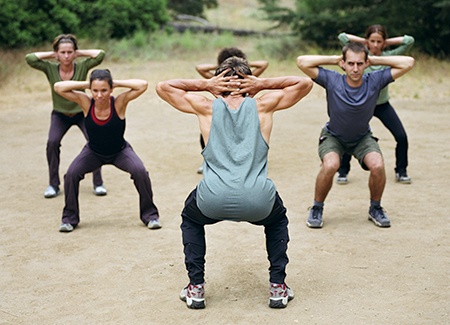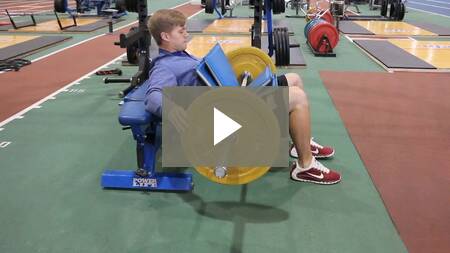Gluten intolerance and celiac recently has become a very popular nutritional topic. Gluten is a protein found in grains, including wheat and rye. Digestive issues, joint pain, and headaches are a few of the health issues that may occur if you have this intolerance and eat foods that contain gluten. Many individuals adopt a gluten-free lifestyle, which could lead to positive changes when paired with exercise and overall health.
But what if I told you there was a certain lifestyle that would have an opposite effect on your life? This is also characterized as gluten-free, but has nothing to do with food. This “Glute-n Free” lifestyle may be holding you back from achieving many exercise or physical activity goals, or could lead to simple lifestyle issues, such as dealing with nagging lower back pain.
Gluten = Bad, Glutes = Good!
This Glute-n free trend I’m referring to is minimal or absence of gluteal exercises during your workout programs. The gluteus maximus is the largest muscle in the body. It is essential in just about every physical activity and is the central core muscle. You could consider this muscle to be the body’s powerhouse. Along with glute max, you have other gluteal muscles with various responsibilities, like hip stability. You will use these muscles in just about every activity that you do. From swinging a golf club to picking up a box off the ground, the glutes are vital.
Glute strength is important no matter what at point you are in your life. You could be an elite athlete looking to improve your broad jump, or a grandparent wanting to be able to pick up your grandchild while playing. Regardless of your goal, the strength of these muscles should be a main focus in your training program. One of the main movement patterns that these muscles help produce is known as the “hip hinge” movement pattern. Some fitness examples of this movement include the kettlebell swing, deadlift, and RDL.
Success in these exercises, or this movement pattern in general, relies heavily on your body’s ability to maintain good form under load, which is much easier when the muscles are up for the task. If muscles do not have the capabilities to withstand these forces, many issues could arise, commonly in the form of lower back pain.
The Functional Importance of the Glutes
This example does not stop in the gym, either. If you are at home and try to pick up a couch while rearranging furniture, the same rules apply. If your body (a big part of which being the glutes) is not strong enough to deadlift the couch, how did you get it up in the air? The simplest answer is that you were able to compensate from some other area (lower back) to hoist the couch up and move it. If strength levels were adequate to lift it, my guess would be you would not be feeling any pain.
On the opposite end of the spectrum, you could be a Division I linebacker who is looking to become more powerful while tackling. Tackling requires an enormous amount of power from the hip hinge position that allows one to deliver the biggest strike possible to the ball carrier. If I told you I would make you a stronger tackle with a few modifications to a training program, would you do it? I’d hope so.
So now that I’ve given my spiel about why training the glutes is important, here are my top 5 glute exercises that will help you develop a backside that Sir Mix-a-Lot would be proud of. These exercises start with the most basic and end with the most advanced.
- Single-Leg Glute Bridge
- Lateral Band Walks
- Cable Pull-Through
- Barbell Hip Press
- Deadlift
This blog was written by Alex Soller, NIFS Athletic Performance Coach. To find out more about the NIFS bloggers click here.


